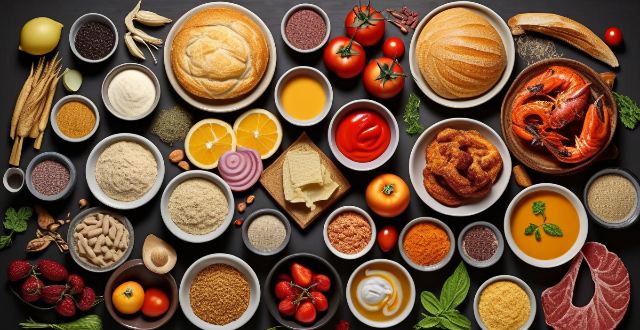Chinese cuisine is one of the most diverse and influential cuisines in the world, with a history that spans thousands of years. While there are many similarities between Chinese cuisine and other Asian cuisines, there are also several key differences that set it apart. These differences include the use of ingredients, cooking techniques, flavor profiles, and regional variations within each cuisine. Chinese cuisine often uses a wider variety of ingredients than other Asian cuisines, including both meat and vegetables. Additionally, Chinese cuisine often incorporates more spices and herbs into its dishes than other Asian cuisines. Another difference is the cooking techniques used. Chinese cuisine often involves stir-frying or steaming foods, while other Asian cuisines may rely more heavily on grilling or baking. Chinese cuisine also tends to use woks for cooking, which allows for high heat and quick cooking times. In terms of flavor profiles, Chinese cuisine has a distinct flavor profile that sets it apart from other Asian cuisines. Chinese cuisine often features bold flavors such as garlic, ginger, soy sauce, and chili peppers. In contrast, Japanese cuisine may have a lighter, more delicate flavor profile that emphasizes umami (savory) flavors. Thai cuisine, on the other hand, may be spicier and more aromatic than Chinese cuisine. Finally, another difference between Chinese cuisine and other Asian cuisines is the regional variations within each cuisine. China has a vast geographic area with many different regions, each with its own unique culinary traditions. Similarly, Japanese cuisine can vary greatly depending on whether it comes from the northern or southern regions of Japan.

Chinese Cuisine vs. Other Asian Cuisines
Chinese cuisine is one of the most diverse and influential cuisines in the world, with a history that spans thousands of years. While there are many similarities between Chinese cuisine and other Asian cuisines, there are also several key differences that set it apart. Here are some of the main differences between Chinese cuisine and other Asian cuisines:
Use of Ingredients
One of the biggest differences between Chinese cuisine and other Asian cuisines is the use of ingredients. Chinese cuisine often uses a wider variety of ingredients than other Asian cuisines, including both meat and vegetables. For example, while Japanese cuisine may focus on fish and seafood, Chinese cuisine includes a wide range of meats such as pork, beef, chicken, and duck. Additionally, Chinese cuisine often incorporates more spices and herbs into its dishes than other Asian cuisines.
Cooking Techniques
Another difference between Chinese cuisine and other Asian cuisines is the cooking techniques used. Chinese cuisine often involves stir-frying or steaming foods, while other Asian cuisines may rely more heavily on grilling or baking. Chinese cuisine also tends to use woks for cooking, which allows for high heat and quick cooking times.
Flavor Profiles
Chinese cuisine has a distinct flavor profile that sets it apart from other Asian cuisines. Chinese cuisine often features bold flavors such as garlic, ginger, soy sauce, and chili peppers. In contrast, Japanese cuisine may have a lighter, more delicate flavor profile that emphasizes umami (savory) flavors. Thai cuisine, on the other hand, may be spicier and more aromatic than Chinese cuisine.
Regional Variations
Finally, another difference between Chinese cuisine and other Asian cuisines is the regional variations within each cuisine. China has a vast geographic area with many different regions, each with its own unique culinary traditions. For example, Sichuan cuisine is known for its spicy flavors, while Cantonese cuisine is known for its light and fresh flavors. Similarly, Japanese cuisine can vary greatly depending on whether it comes from the northern or southern regions of Japan.
In conclusion, while there are certainly similarities between Chinese cuisine and other Asian cuisines, there are also several key differences that set them apart. These differences include the use of ingredients, cooking techniques, flavor profiles, and regional variations within each cuisine.